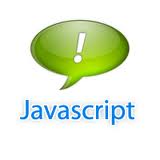JSON stands for Java Script Object Notation. JSON is a format for efficient transfer of data across Platform. To manipulate JSON in Java, we have many processors. One of such JSON processor in Java is Jackson. Jackson is a high performance JSON processor. Reading, Writing and modifying contents is made easy in Java using the …
Photo Viewer using JavaScript
HTML has a separate element for image display. This will display the image in a specific region of the page. If we want to add multiple pictures and view it one at a time, then HTML does not have any such tag. We need to build our own design for that. This is a JavaScript …


